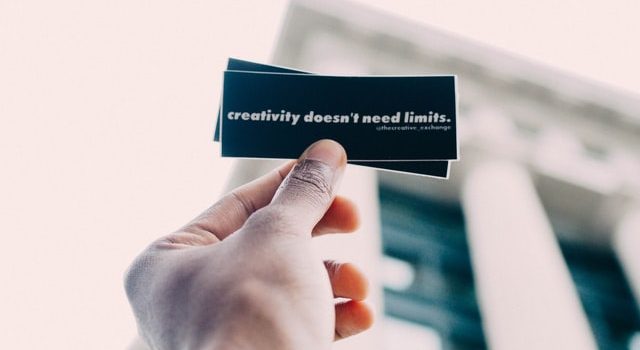

This article is an excerpt from the Shortform book guide to "Big Magic" by Elizabeth Gilbert. Shortform has the world's best summaries and analyses of books you should be reading.
Like this article? Sign up for a free trial here .
Does your creative muse come and leave out of the blue? How can you maintain your creative inspiration in the long run, and ideally, for the rest of your life?
Creativity is a capricious force—it can come and go at the most unexpected times. If you want to maintain your creative momentum, you must subdue this force to your control.
In this article, we’ll discuss several big-picture approaches you should take to your creativity to keep your creative juices flowing.
Don’t Search Too Hard for Answers
To maintain your creative momentum in the long run, Gilbert says to refrain from trying to analyze and understand the vagaries of your creative process. Because so much of creativity—the receiving of ideas, the intervention of your genius—is Creative Sorcery, it is beyond the realm of logic. You can’t bring reason to it. Instead, says Gilbert, learn to be okay with unknowns and mystery. Maintain joyous faith in Creative Sorcery, and know that it has your best interests at heart and wants to help you.
(Shortform note: The way that Gilbert advises against investigating into Creative Sorcery is somewhat reflected in the content and approach to creativity of Big Magic itself. Critics have described the book as containing good, broad discussions on creativity but little specific advice on how to actually create. Perhaps Gilbert, in writing her book, was following her own advice on not digging too deeply into the mystery of Creative Sorcery.)
Try Hard, But Don’t Care Too Much
Gilbert feels that to get along with Creative Sorcery over your years of creativity, you must both try very hard but also not care at all about your creative work. Here’s how you can put this into practice: As discussed in Chapter 5, in the moment you’re actively creating, commit yourself fully to your work. But when you’re not actively creating, writes Gilbert, distance yourself from your work to see it for what it is: merely a creative enterprise. Your artistic work is, in the grand scheme of things, most likely unimportant, so don’t let it make you unhappy.
Taking your idea too seriously prevents you from executing well or moving on to a new idea or approach, says Gilbert. You’re no longer playful and loose, and this shuts off your creativity.
(Shortform note: In her assertion that creative work doesn’t ultimately matter and therefore shouldn’t make you unhappy or stressed, Gilbert is referring narrowly to work in the arts. But even people working in essential, life-saving fields, like healthcare, should avoid taking their work so seriously that it leads to burnout. Burnout is characterized by a loss of motivation and energy and a lack of engagement with tasks. In healthcare specifically, it’s associated with increased medical errors, a drop in care quality, and low patient satisfaction. No matter what field you work in, maintaining a healthy distance between yourself and your work keeps your mind free and allows you to continue being productive—and helpful to others.)
Put It Out There Without Shame or Apology
Gilbert also stresses that to maintain a strong connection to Creative Sorcery in the long run, you must not let fear or embarrassment get in the way of sharing your work. Put your creation out into the universe, and do so proudly, without apology or shame, and with faith that Creative Sorcery has your back.
Feelings of self-consciousness around presenting your work to the world are inevitable, says Gilbert. Sharing a creative project is an act of vulnerability. But remind yourself that you have the right to create and share your creation with the world.
| Coping Effectively With Shame Gilbert doesn’t provide concrete ways to get over self-consciousness and shame around sharing your creative work. Brené Brown’s book Dare to Lead can fill in this gap with specific suggestions. Brown firstly argues that shame is an inherent part of risk and failure and that because a creative life is full of risk-taking, shame can’t be fully eliminated from it (this is, incidentally, reminiscent of Gilbert’s discussion around fear and the need to live with it, rather than eradicate it). To cope with shame, therefore, Brown recommends first that you recognize it when you experience it. You can typically feel how shame impacts your body, like through your clenched fists. Next, Brown recommends reminding yourself that shame is a universal feeling which everyone experiences. Finally, speak with others about your feelings of shame. This reduces the isolating power shame can have over you. |
Never View Anything as Sacred
Gilbert’s final recommendation for maintaining a healthy relationship with Creative Sorcery in the long term is to never view your creativity or your creative output as sacred. Nothing you make is ever final, perfect, or a “crowning achievement,” writes Gilbert. You may well create something far superior in the future, or you may never create anything quite as good ever again. It doesn’t matter either way, as long as you continue to enjoy the process.
(Shortform note: Avoiding seeing your work as sacred is a good habit that can trickle down into your practical creative decisions. The concept of “killing your darling” is an example of an everyday application of eschewing sacredness: When creating, we can feel that we have made a “darling,” a piece of a larger work that we feel is particularly clever. However, there may come a time when you have to eliminate, or kill, that darling in service of the greater work. For instance, when writing a novel, you may write a scene that you particularly love, but that ultimately doesn’t serve the wider plot. If you, as Gilbert suggests, refrain from seeing that piece as “sacred,” it will be much easier to cut it.)
Similarly, never allow your creativity to harden or become inflexible, insists Gilbert. The whole point of creativity is to live a full, rewarding life, to commune again and again with the forces of Creative Sorcery, and to continue learning and growing. If you take your creativity too seriously or see the creative process as a repeatable formula or as a series of consecrated actions, you lose the growth, joy, and beauty that is otherwise to be derived from the process. An attitude that is instead playful and lightly profane lets you keep the channels between yourself and Creative Sorcery open, claims Gilbert. (Shortform note: Gilbert proposes you approach your creativity with a light touch but doesn’t offer actionable ways to practice this. One way to combat the inflexibility that can arise when you’ve been doing something for a long time is to be more present and responsive to your immediate surroundings: in other words, to practice mindfulness. In The Power of Now, spiritual teacher Eckhart Tolle describes how being aware allows you to respond more skillfully to present stimuli, rather than fall back on old patterns of behavior (which Tolle feels are often motivated by your ego and by fear). You keep your mind open and alert, rather than stuck in familiar patterns.)

———End of Preview———
Like what you just read? Read the rest of the world's best book summary and analysis of Elizabeth Gilbert's "Big Magic" at Shortform .
Here's what you'll find in our full Big Magic summary :
- Why integrating creativity into your daily life will make you feel more fulfilled
- Why creating for money is a form of self-sabotage
- Why you should never focus on external validation of your creations






